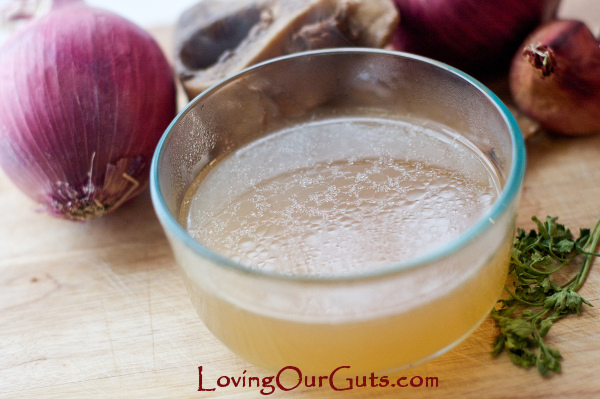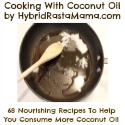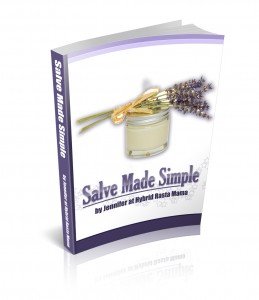Guest Post: 3 Shortcuts to Making Bone Broth
Today’s Guest post is from KerryAnn of Cooking Traditional Foods. As you know broth is a pretty important subject around here. I love it so much that I wrote a book about it! Broth: Elixir of Life. KerryAnn spends time today explaining the pros and cons of 3 broth making methods that can help you to always have broth on hand in your kitchen. Since it is summer my current favorite method is with my 10 qt pressure cooker since it is done so quickly and doesn’t heat up the kitchen.
Enjoy!
-PattyLA
In a hurry? A lack of time to cook wholesome, nourishing food is one of the main reasons people cite for not trying or continuing a real foods diet. It can also make you fall off the bandwagon and have problems getting back on track. But real food doesn’t have to be time consuming. With a few tricks, you can be in and out of the kitchen quickly.
Bone broth is usually thought to be time consuming to prepare. Here are three shortcuts to making bone broth in record time without sacrificing quality or nutrition.

Photo by Jen Pagano
Pressure Cooker
With a pressure cooker, you can cut the cooking time down to one hour. I have a ten-quart pressure cooker. After a meal, I take the chicken carcass and place it in the bottom of the pressure cooker. I add 1 chopped up onion, 2 chunked carrots and two ribs of celery. I cover it all with about one gallon of water. Then I follow my manufacturer’s instructions to seal and heat the cooker. Once the cooker reaches 15 pounds of pressure, I turn down the heat to keep the pressure steady and allow it to cook for one hour. After a quick cool down, the stock is ready for use.
Pros:
- New pressure cookers are safer than the ones your grandma used, with multiple release valves to prevent explosions.
- Done in one-and-a-half hours.
- Correctly made broth can gel.
- It doesn’t need vinegar to be able to soften the bones.
Cons:
- You must be home the entire time the pressure cooker is running, and you must be able to monitor it.
- Sizes are limited and you can only fill a pressure cooker half full, so batches will be smaller than what you could do in a large stock pot or crock-pot.
- You must have or purchase a pressure cooker. This investment can run $50-150, depending on the size and materials.
- Some pressure cookers are made from aluminum. Make sure yours is made of stainless steel.
Crock-Pot
I adore my 18-quart crock-pot for making huge batches of stock! I was always concerned about leaving my stove on overnight, but since crock-pots are designed to be on for long hours without a problem, I don’t worry about leaving it on while we sleep. This is awesome because I can get the mineral-rich, long-cooked stocks without the extra work that would come by making it on top of the stove. As an added bonus, if I need a little stock for something I’m cooking, I can open the lid and get some stock out and replace it with water with ease.
To make stock in my crock-pot, I place a cold carcass into the crock. Hot bones can have their pores closed, so it’s important to make sure the carcass has cooled to room temp or colder before making stock. Add 1 onion, 2 carrots and 2 celery ribs that have been chunked. I then add two tablespoons of white or apple cider vinegar and one gallon of water. Pop the lid on and allow it to sit, covered but with no heat, for one hour. This allows the vinegar to penetrate the pores of the bones so they can release their minerals. Turn on the heat to high, bring to a boil, and skim any foam that arises. Then reduce the heat to low and allow to cook for 8 to 48 hours.
Pros:
- Can pull out some stock to use while it is still cooking.
- Cooking overnight is less worrisome.
- Keeps your stove free for cooking other dishes while the stock cooks.
- Can be taken outside and put in the garage, a covered porch or similar, protected area to cook without heating up the house in Summer.
- You can make perpetual broth- keep adding bones and removing the used ones that have softened while the crock-pot runs continuously. When you take out some stock, replace it with an equal amount of water.
- Large crock-pots can make stock in large batches, meaning you can store some for later use.
Cons:
- Long cooking times to extract minerals from the bones can break down the gelatin in your stock.
- Smaller crock-pots don’t produce much stock at one time.
- Long-cooked stocks should be defatted before use because the fats could be in the process of going rancid.
- Starting the stock takes a bit of time that you must be at home so you can soak, turn on, skim and reduce the heat before you’re able to leave it.
- Large roasters/crock-pots that are 18 quarts or larger might not fit on your kitchen counters. If so, you’ll have to find another spot in your house that is safe for stock making.
Dehydrated Stock
If you need stock quickly, you can keep dehydrated stock on hand to get your through your busy times. Dehydrated stock is normal stock you make in a pressure cooker, in a crock-pot or on the stove that you dehydrate until it is dry. Then you run the dried stock through a blender to crush it to a powder. If you’d like to learn more about dehydrating stock, you can listen to the podcast interview I did with Patty on it by clicking here. If you’d like to watch a video of how to make and dehydrate stock, you can sign up for our free video class on bone broth here.
Pros:
- Extremely convenient to use.
- You can store a lot of stock in a very compact space.
- Because it is powdered, you can hide it in many dishes and spice mixes where you couldn’t use liquid stock.
Cons:
- You need a dehydrator or an oven that goes down to 170 degrees.
- Dehydration is an extra step that does take more time than just making fresh stock.
Learn More
If you’d like to learn more about stock making and related real food topics, my Free Video Course has multiple videos, articles and recipes on making stock. You can watch as I make and dehydrate stock, see my favorite recipes and much more. Registration is free! Come learn even more tips and tricks to getting your stock to turn out beautifully.
You will learn
- How to create great stock with minimal time and effort.
- How to use chicken feet in making stock.
- How to store stock without refrigeration.
- Ideas for sneaking stock into your family.
- Great recipes that use your homemade stock
- And more!
You will receive
- Video instruction on making and storing bone broths, prepping chicken feet for use in stock, and more.
- Resources and print-outs
- Recipes
- Links to more information
- Coupon codes for our products
- And more!
Click here to learn more and sign up for this free class!
 KerryAnn Foster runs Cooking Traditional Foods, the longest running Traditional Foods Menu Mailer on the internet, now in its seventh volume. KerryAnn has eleven years of traditional foods experience and is a former Weston A. Price Foundation chapter leader. Read about KerryAnn’s journey to health through multiple miscarriages, celiac disease, food allergies and intolerances, obesity, adrenal fatigue and heavy metals.
KerryAnn Foster runs Cooking Traditional Foods, the longest running Traditional Foods Menu Mailer on the internet, now in its seventh volume. KerryAnn has eleven years of traditional foods experience and is a former Weston A. Price Foundation chapter leader. Read about KerryAnn’s journey to health through multiple miscarriages, celiac disease, food allergies and intolerances, obesity, adrenal fatigue and heavy metals.
Founded in 2005, CTF helps you feed your family nourishing foods they will love. With two choices of Menu Mailers, multiple eBooks, Print Books and video-based classes, KerryAnn makes traditional foods easy, accessible, affordable and family friendly for everyone.
KerryAnn founded Nourished Living Network, a network for traditional food and natural living bloggers, in 2011. NLN provides support, publicity and networking opportunities for bloggers all across the traditional foods spectrum. Our Recipe Gallery features recipes from the fifty member blogs and growing.




2 Comments
Trackbacks/Pingbacks
- Three Shortcuts to Making Bone Broth in Record Time! | Cooking Traditional Foods - [...] I have a guest post over at Loving Our Guts on three shortcuts to making bone broth in record …

















Hello, thank you for this. I usually make my chicken stock in my crock pot with a total cooking time of about 14-17 hours. Do I still need to skim the fat or is this just for perpetual broth?
KerryAnn. I really want to try dehydrated broth before I go out and buy a dehydrator. Can I buy some from you? I can’t find it anywhere on the internet.